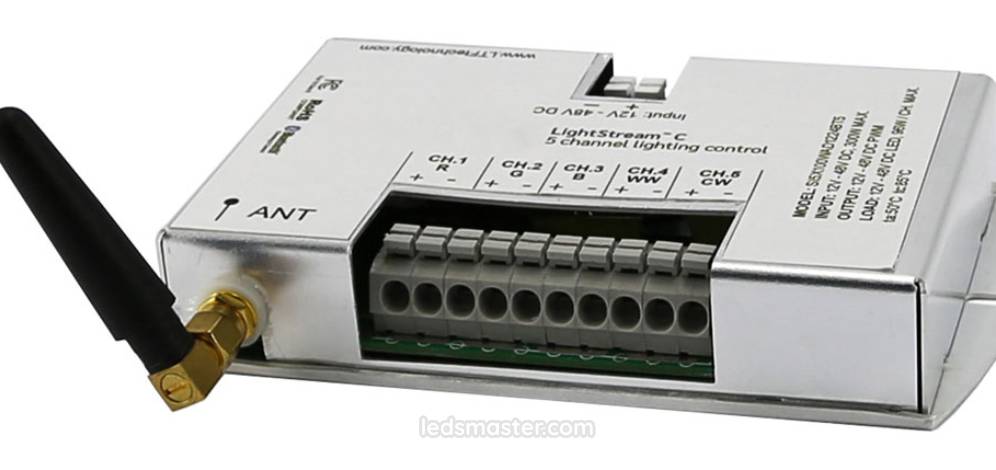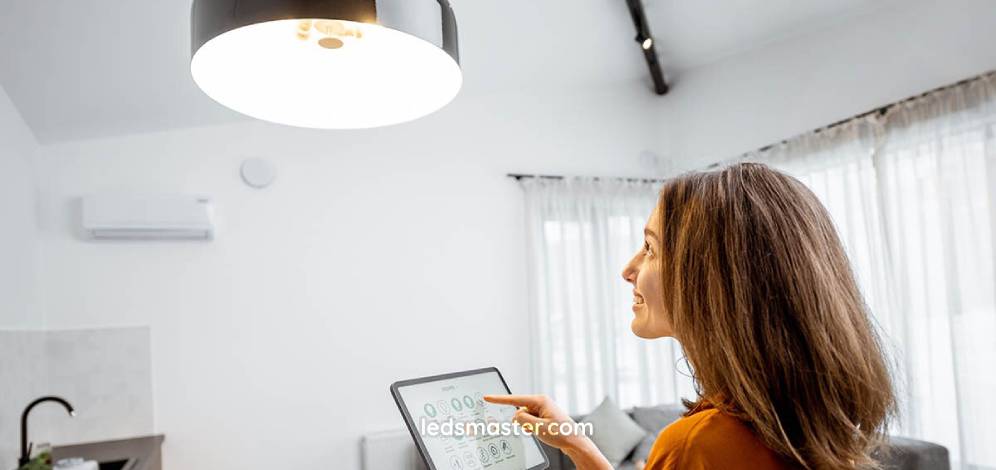Lighting has come a long way from the simple on-and-off switches of the past. With advancements in technology, lighting systems have evolved to become more energy-efficient, customizable, and integrated into smart home and building automation systems. At the heart of these advancements is the intelligent lighting control module—a sophisticated piece of technology that allows for the automated control, remote management, and monitoring of lighting systems.
Table of Contents
ToggleTypes of Intelligent Lighting Control Modules
Standalone Lighting Control Modules
Standalone lighting control modules are designed for single-room or small-scale applications. These modules operate independently, without the need for a central control system. They are ideal for residential homes or small offices where basic automation features, such as dimming, daylight harvesting, or occupancy sensing, are sufficient. Standalone modules are relatively easy to install and configure, making them a popular choice for retrofit projects or locations where a full building automation system is not necessary.
Networked Lighting Control Modules
Networked lighting control modules are designed to be part of a larger, integrated system. These modules communicate with a central controller or building management system (BMS), allowing for coordinated control of lighting across multiple zones or even entire buildings. Networked modules are typically used in commercial or industrial settings where advanced features, such as scheduling, load shedding, and energy monitoring, are required. They offer greater flexibility and scalability compared to standalone modules, making them suitable for large-scale projects.

Wireless Lighting Control Modules
Wireless lighting control modules use wireless communication protocols, such as Zigbee, Z-Wave, or Bluetooth, to connect to the control system. These modules are particularly useful in retrofit applications where running new wiring would be cost-prohibitive or impractical. Wireless modules can be easily integrated into existing lighting systems, providing all the benefits of intelligent control without the need for extensive rewiring. They are also a key component in smart home systems, where they can be controlled via smartphone apps or voice assistants.
Functions of Intelligent Lighting Control Modules
Automated Control
One of the primary functions of an intelligent lighting control module is to provide automated control of lighting systems. This can be achieved through various methods, including time-based scheduling, occupancy sensing, and daylight harvesting. Time-based scheduling allows users to program lights to turn on or off at specific times, reducing the need for manual intervention. Occupancy sensors detect the presence of people in a room and automatically adjust the lighting levels accordingly. Daylight harvesting systems use sensors to measure the amount of natural light entering a space and adjust the artificial lighting to maintain a consistent light level, saving energy in the process.
Remote Management
Intelligent lighting control modules enable remote management of lighting systems, allowing users to control their lights from anywhere in the world. This can be done through a dedicated app on a smartphone or tablet, or via a web-based interface. Remote management provides users with the ability to monitor their lighting system in real-time, make adjustments on the fly, and receive notifications if something goes wrong. This feature is particularly useful for businesses with multiple locations, as it allows for centralized control and management of lighting systems across different sites.
Scene and Zone Control
Scene and zone control are advanced features offered by intelligent lighting control modules. Scene control allows users to create and store custom lighting scenes that can be recalled at the touch of a button. For example, a “movie night” scene might dim the lights to a soft glow, while a “dinner party” scene might brighten the lights to create a more festive atmosphere. Zone control enables users to divide a space into different lighting zones, each with its own independent control. This is particularly useful in open-plan offices or large commercial spaces where different areas may have different lighting requirements.
Data Collection and Monitoring
In addition to controlling lighting systems, intelligent lighting control modules can also collect and monitor data related to the performance and usage of the lighting system. This data can be used to optimize the system, identify potential issues, and reduce energy consumption.
Energy Monitoring
Energy monitoring is one of the most valuable features of intelligent lighting control modules. By tracking the energy consumption of the lighting system in real-time, users can identify inefficiencies and take steps to reduce their energy usage. For example, energy monitoring might reveal that certain lights are being left on unnecessarily, allowing users to adjust the scheduling or install occupancy sensors to address the issue. Over time, these small adjustments can lead to significant energy savings and a reduction in utility costs.
Fault Detection and Diagnostics
Intelligent lighting control modules can also detect and diagnose faults within the lighting system. This might include issues such as a burnt-out bulb, a malfunctioning sensor, or a communication error between the module and the central controller. When a fault is detected, the system can send an alert to the user, allowing them to address the issue before it leads to more significant problems. In some cases, the module may even be able to perform self-diagnostics and automatically correct certain issues, further reducing the need for manual intervention.
Occupancy and Usage Tracking
Another important function of intelligent lighting control modules is occupancy and usage tracking. By monitoring when and where lights are being used, the system can provide insights into how spaces are being utilized. This information can be invaluable for businesses looking to optimize their operations. For example, if the data reveals that certain areas of a building are rarely occupied, the business might choose to reduce the lighting levels in those areas or even close them off entirely to save energy. Conversely, if a space is heavily used, the business might choose to increase the lighting levels or install additional lighting to improve comfort and productivity.

Remote Management and Control
Mobile Apps and Web Interfaces
Many intelligent lighting control modules come with mobile apps or web interfaces that allow users to control their lights from their smartphones, tablets, or computers. These interfaces provide an intuitive and user-friendly way to manage the lighting system, with features such as real-time monitoring, remote control, and push notifications. Users can turn lights on or off, adjust brightness levels, create custom scenes, and even set up automation rules, all from the palm of their hand. For businesses with multiple locations, centralized control through a web interface can greatly simplify the management of lighting systems across different sites.
Integration with Smart Home Systems
Intelligent lighting control modules can also be integrated with smart home systems, such as Amazon Alexa, Google Home, or Apple HomeKit. This integration allows users to control their lights using voice commands, further enhancing the convenience and ease of use. For example, a user might say, “Alexa, turn off the living room lights,” and the intelligent lighting control module will execute the command instantly. Integration with smart home systems also allows for more complex automation scenarios, such as having the lights turn on automatically when the user arrives home or adjusting the lighting based on the time of day or weather conditions.
Remote Diagnostics and Maintenance
In addition to providing remote control, intelligent lighting control modules can also facilitate remote diagnostics and maintenance. If a problem occurs within the lighting system, the module can send an alert to the user, who can then access the system remotely to diagnose the issue. In some cases, the problem may be resolved remotely without the need for a physical inspection. This can save time and reduce the need for on-site maintenance, particularly in large or geographically dispersed installations.
Automated Lighting Control
Scheduling and Timers
Scheduling and timers are fundamental features of automated lighting control. These features allow users to program their lights to turn on or off at specific times, based on their daily routines or business hours. For example, a homeowner might set their porch lights to turn on at sunset and off at sunrise, while a business might schedule its office lights to turn off automatically at the end of the workday. Scheduling and timers can also be used to create more complex lighting patterns, such as gradually dimming the lights in the evening to create a relaxing atmosphere or brightening the lights in the morning to help wake up.
Occupancy Sensing
Occupancy sensing is another key feature of automated lighting control. Occupancy sensors detect the presence of people in a room and automatically adjust the lighting levels accordingly. This can be particularly useful in areas where lights are often left on unintentionally, such as bathrooms, hallways, or conference rooms. By automatically turning off the lights when a room is unoccupied, occupancy sensors can help to reduce energy consumption and extend the lifespan of the lighting system. Some advanced occupancy sensors can also differentiate between different types of activity, such as walking, sitting, or sleeping, and adjust the lighting levels accordingly.
Daylight Harvesting
Daylight harvesting is an energy-saving technique that uses sensors to measure the amount of natural light entering a space and adjusts the artificial lighting accordingly. By reducing the amount of artificial light needed during daylight hours, daylight harvesting can significantly reduce energy consumption and create a more comfortable and visually pleasing environment. Intelligent lighting control modules can be programmed to implement daylight harvesting strategies automatically, ensuring that the lighting levels are always optimized based on the available natural light.
Benefits of Intelligent Lighting Control Modules
Intelligent lighting control modules offer a wide range of benefits, from energy savings and enhanced comfort to improved security and reduced maintenance costs. By providing advanced control, monitoring, and automation features, these modules can significantly improve the performance and efficiency of any lighting system.
Energy Efficiency and Cost Savings
One of the most significant benefits of intelligent lighting control modules is their ability to reduce energy consumption and lower utility costs. By automating the control of lighting systems and optimizing the use of natural light, these modules can reduce the amount of electricity needed to light a space. Features such as occupancy sensing, daylight harvesting, and scheduling can further enhance energy efficiency by ensuring that lights are only used when needed. Over time, these energy savings can add up to significant cost reductions, particularly in large commercial or industrial settings.
Enhanced Comfort and Productivity
Intelligent lighting control modules can also improve comfort and productivity by providing more precise control over lighting levels. For example, in an office setting, the ability to adjust lighting based on the time of day or the amount of natural light can help to reduce eye strain and improve focus. In residential settings, custom lighting scenes can create a more relaxing or inviting atmosphere, enhancing the overall quality of life. By tailoring the lighting to the specific needs of the occupants, intelligent lighting control modules can create a more comfortable and productive environment.
Improved Security
Security is another important benefit of intelligent lighting control modules. By enabling remote control and monitoring of lighting systems, these modules can help to deter unauthorized access and enhance the security of a property. For example, a homeowner might use a mobile app to turn on the lights while they are away, creating the impression that someone is home. In commercial settings, intelligent lighting control modules can be integrated with security systems to provide automatic lighting in response to alarms or motion detection. This can help to deter intruders and provide a safer environment for employees and customers.
Reduced Maintenance and Extended Lifespan
Intelligent lighting control modules can also help to reduce maintenance requirements and extend the lifespan of the lighting system. By automating the control of lights and ensuring that they are only used when needed, these modules can reduce the wear and tear on the lighting system, leading to fewer repairs and replacements. Features such as fault detection and remote diagnostics can further reduce maintenance costs by identifying and addressing issues before they become more serious. This can be particularly beneficial in large or complex installations, where maintenance costs can be a significant expense.
Conclusion
These sophisticated devices offer a range of benefits, from energy efficiency and cost savings to enhanced comfort, security, and reduced maintenance. By integrating automated control, remote management, and advanced features like occupancy sensing and daylight harvesting, intelligent lighting control modules not only optimize lighting performance but also contribute to a more sustainable and user-friendly environment. As technology continues to advance, these modules will play an increasingly central role in shaping the future of lighting solutions, making spaces more efficient, comfortable, and secure.

